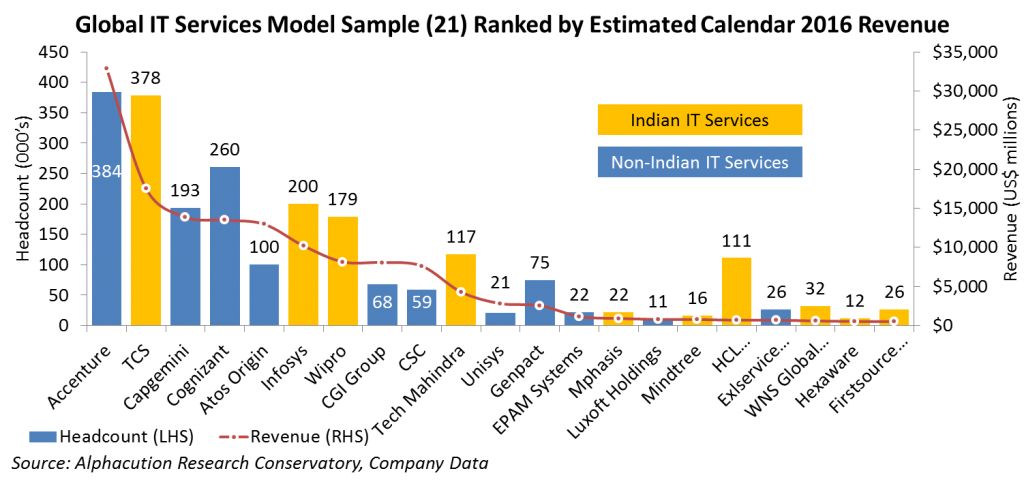The following is the opening segment from our most recent study – “IT Services and Strategic Impacts for Global Banks: The Force Multiplier” – published via our partner, Aite Group. Learn more about how to access the full report here.
Today, outsourced IT services are firmly embedded in all industries and most large corporations. Alphacution’s message to financial sector clients and other buyers of IT services is both blessing and curse: The global IT services sector continues to be dominated by lowest-cost, predominantly India-based human capital, and the motivation to engage with these services continues to be, as it seems to have been all along, about labor arbitrage, or the savings harvested from the reduction of high-cost, U.S.- or U.K.-based in-house human capital in favor of lowest-cost, leased human capital. Although the expectation to improve performance—via higher-quality output, more efficient output, or some other cocktail of innovation—is rarely made explicit, we believe that the potential for enhanced process efficiencies adds value to the equation. This is the blessing part.
The potential curse is more nuanced: Any function or workflow that is outsourced primarily in the interest of reducing cost is simultaneously incurring a potentially serious, albeit intangible, liability. That liability is in the forgoing of the opportunity for the development of intellectual property and other proprietary innovation around functions and workflows that are outsourced. Moreover, any intellectual property rights earned by the outsourced services agent remains the property of that agent, even though process enhancements that result in improved outputs are enjoyed by the bank or asset manager. In the pantheon of relevant current events, Alphacution discovered one during the development of this research that exemplifies the importance and scale of this sector: A new pure-play entity has been born onto the IT services landscape. At least, its name is new. DXC Technology, the result of the merger of Computer Science Corporation (CSC) and the enterprise services component of Hewlett Packard Enterprise (HPE), has burst onto the scene as a more than US$30 billion IT giant. Mike Lawrie, the chairman, president, and chief executive officer of the new entity asserts that the venture “will become recognized globally as a force multiplier.” So, there it is. The gauntlet had already been thrown—and we had already picked it up.
The goal of this report is not only to estimate the portion of banks’ IT spending that is attributable to the IT services sector but also to characterize the wisdom of shorter-term cost savings objectives in the face of these potential longer-term and arguably intangible liabilities for banking, financial services, and insurance. What does this modeling teach us about the impacts of these decisions, particularly now that it seems that IT services firms are embedded in long term— if not perpetual—partnerships with large banks, insurance companies, and asset managers? In other words, what readers will find herein is essentially whether Alphacution agrees with Mike Lawrie. Do IT services represent a force multiplier?
Primary list of companies included in this report:







